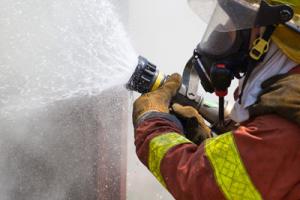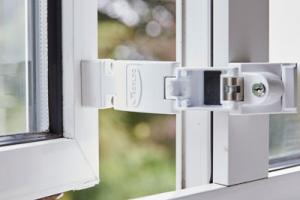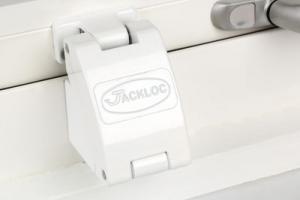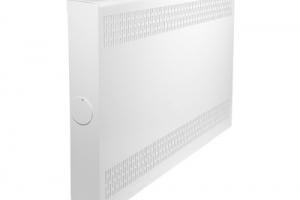There is a need for more training and education around the risk of medical oxygen fires, explains Richard Radford, Managing Director of medical…
4 top tips for electrical appliance safety in your care home
Staff in the care sector need all sorts of electrical appliances to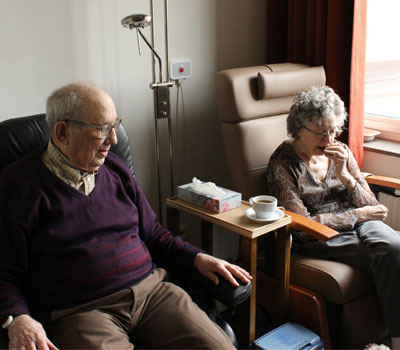 help them do their job, but these tools bring their own unique set of hazards. Here, Beckie Hatton from Home Appliance Care shares her tips for keeping the electricals in your care home running smoothly and safely.
help them do their job, but these tools bring their own unique set of hazards. Here, Beckie Hatton from Home Appliance Care shares her tips for keeping the electricals in your care home running smoothly and safely.
Whether you're making residents a cup of tea in the morning, or keeping them warm throughout the winter, nursing and care homes depend on a wide range of electrical appliances to provide a high level of care. But, if left unchecked, this equipment can develop faults or fall into disrepair — and poorly maintained appliances can present a serious safety hazard for both your staff and residents.
The good news is that regular checks, maintenance, and a few common-sense procedures can help keep everyone safe. Here, I’ll share the electrical maintenance tips that all care home owners and managers should know.
Electrical safety and the law
Under the Health and Safety at Work Act 1974 and the Electricity at Work Regulations 1989, all employers are obligated to safeguard their employees and members of the public (in this care, the residents) from harm. It’s also the duty of the business owner to ensure that electrical appliances are well-maintained and fit for purpose.
To meet the regulations, you should carry out a risk assessment that looks at all the potential electrical hazards in your business and sets out measures to prevent injuries and accidents. This action plan should include a schedule for safety inspections, as well as training procedures for your staff to help them minimise risks when using appliances on a day to day basis.
Inspections and testing
As with any commercial business that uses electrical appliances, portable appliance testing (PAT) is a legal requirement in care homes. Inspections must be carried out by a competent person: this is someone who has the right training and sufficient knowledge of electrical work and safety, usually backed up by a formal qualification. Most businesses outsource PAT testing to a professional.
There are two types of testing: physical and visual.
- Visual inspection: This test involves looking at the general condition of the appliance, as well as any wires, cords, and plugs. The inspector should also consider the cleanliness of an appliance, as this can make equipment less effective and safe to use, especially catering equipment.
- Physical testing: Assuming that there’s no visible damage or wear, a physical test can be carried out. This is where a multimeter is used to take the reading. A low ohm reading means that the device is functioning properly, while a reading higher than 120 ohms or 0.L will indicate that it is defective and potentially unsafe.
Different types of equipment will have different timescales for testing:
- Office equipment, like computers or printers: Every 1–2 years.
- Double insulated desktop equipment, e.g. fans and table lamps: Every 2–3 years.
- Hand-held double insulated (or ‘Class II’) equipment, such asfloor cleaners and hand-held kitchen appliances: Every 6 months to 1 year.
- Earthed (or ‘Class I’) equipment, such electric kettles: Every 6 months to 1 year.
- Any equipment used by residents: Every 3 months to 1 year.
- Cables, plugs, and extension leads: Every 1–2 years.
It’s helpful to label each appliance with the date of the last test, so you can keep track of what needs to be checked when.
What staff and carers can do
While regular inspections are a legal requirement, that doesn’t mean you can just forget about checking your appliances for the rest of the year. This is particularly true for residential or nursing environments as, unlike with a typical 9 to 5 business, your electrical goods will often be needed 24 hours a day, 7 days a week.
While employers are responsible for maintaining appliances, staff and carers can also play a vital part in helping to reduce the risk of an accident or fault. Staff should make sure that appliances are unplugged when not in use, which will help to stop residents from attempting to use them. Residents shouldn’t be left alone with potentially dangerous equipment for any length of time, either.
Staff should also take a quick look at the condition of the flex before they use a particular appliance, and never try to use something if the plug, cord, or appliance appear damaged in any way. Overloaded plug sockets are also a major cause of electrical faults and fires, so staff should be careful to use adaptors and extension cords safely.
Employers can help encourage staff to do this by offering training and encouraging staff to report faults to a supervisor or manager whenever they notice a problem. By following a simple, regular system of looking for visible signs of damage or faults, most of the risks presented by electrical goods can be controlled.
When to call an engineer
Even with good maintenance and a rigorous system of checks in place, it’s likely that you’ll need to deal with electrical faults from time to time. You should contact an appliance service engineer if you or your staff notice any of the following:
- Worn or frayed cords.
- The appliance is overheating.
- The appliance is making an unusual noise.
- The appliance is water damaged.
Depending on the size of your care home, it may be safer and more cost-efficient to schedule regular maintenance visits with a service engineer. By maintaining your appliances in this way, you can help to prevent potentially hazardous faults from happening, and extend the lifespan of your equipment, too.
Given the number of appliances in the average care home, electrical safety should always be a priority. Follow the advice I’ve outlined here, and you should be able to keep your staff and residents safe from harm. Please note that this isn’t intended as a comprehensive guide, so refer to the HSE’s electrical safety at work resource for more information.


